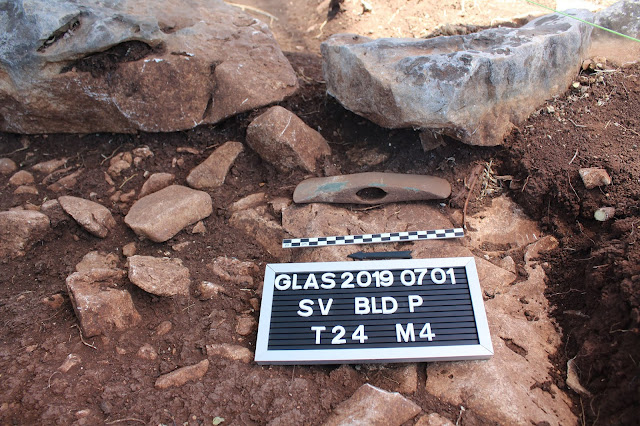Important architectural remains and movable finds dating back to the period of Mycenaean civilization were recently revealed during excavations at the Acropolis of Gla in Boeotia, the Greek Ministry of Culture announced this week.
 |
| Aerial view of the Mycenaean Acropolis of Gla Boeotia [Credit: Greek Culture Ministry] |
The area also served as a flood control center associated with the Mycenaean-era drainage and irrigation system, which used water from Lake Kopais.
 |
| Building M [Credit: Greek Culture Ministry] |
 |
| Building Complex N [Credit: Greek Culture Ministry] |
 |
| Buildings Na, Nb and Nc, Building Complex N [Credit: Greek Culture Ministry] |
 |
| Buildings O and P [Credit: Greek Culture Ministry] |
 |
| Building Q [Credit: Greek Culture Ministry] |
According to the Ministry of Culture, the most recent excavations conducted as part of the 2018-19 archaeological dig uncovered six symmetrical stone blocks used in building construction.
 |
| Preserved pithoi, Building Complex N [Credit: Greek Culture Ministry] |
 |
| Plain Mycenaean hydra (LH IIIB), N Building Complex [Credit: Greek Culture Ministry] |
 |
| Askos with base and ribbon decoration (LH IIIB) from the N Building Complex [Credit: Greek Culture Ministry] |
 |
| Bronze axe, Building P [Credit: Greek Culture Ministry] |
 |
| Preserved lead pieces, Building Complex N [Credit: Greek Culture Ministry] |
The Mycenaean Acropolis of Gla itself was destroyed by fire and abandoned a little before 1200 B.C.
The painstakingly-constructed drainage system on the plain below was abandoned as well and the lake once again flooded the area, as it had before the years of improvement and development in the golden age of Mycenae.
Author: Tasos Kokkinidis | Source: Greek Reporter [November 05, 2019]







No comments: